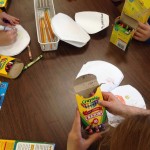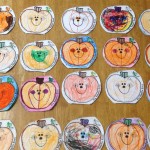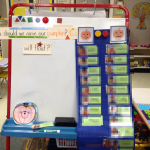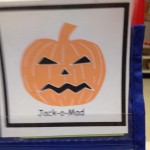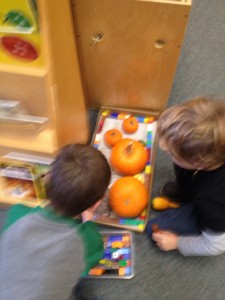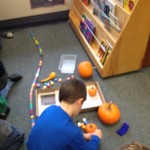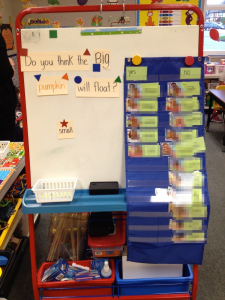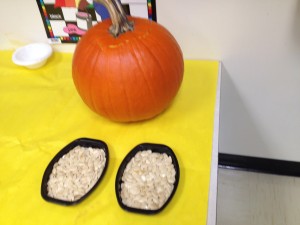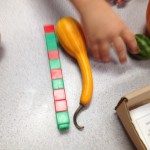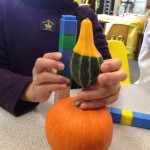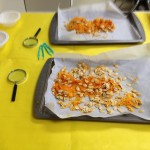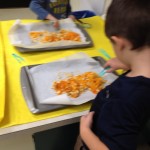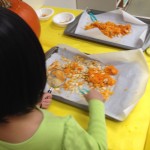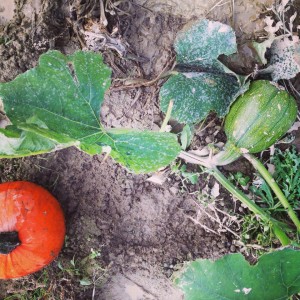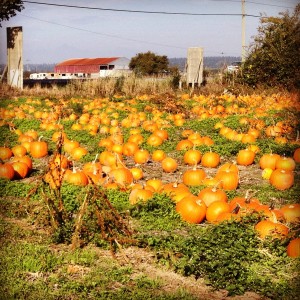On monday after Halloween to start wrapping up I set up a cooking centre at the back of our classroom. I wanted to make pumpkin soup with the students. The main reason for doing this is that I wanted to explore the idea of what happens to pumpkins after halloween. I thought this would be an appropriate way to think about social responsibility from the perspective of young children.
I chopped up the two small pie pumpkins that we used for measurement at home and brought all the ingredients into the classroom. I set up the centre next to the sink so students could wash their hands before we started. The students were incredibly excited about this and one student even thought that what we were doing was going to be “pretend”. When he saw the vegetables he exclaimed “We’re making REAL soup!”. Another student promptly informed him that our soup was “non-fiction” 🙂
Our recipe:
4 cups of vegetable stock
2 pie pumpkins
2 onions
2 potatoes
2 carrots
1/4 cup of cream
cumin, nutmeg, coriander, garlic
Cook on high for 4.5 hours
The students came over to the centre in groups. Each student had a chance to measure out something and pour it into the big crock pot. Afterwords I moved the crock pot to the counter outside the classroom and plugged it in there instead of inside our classroom for safety. That afternoon we all tasted the soup. One student carefully helped me “set the table” for everyone. I think one of the most important outcomes for the students was the social skills. We practiced different things we could say if we didn’t like the soup. “No thank-you.” or “That’s not for me”. (Our yes/no question for that day was “Do you think you will like the soup?)
A really fun time- more pictures to come.


